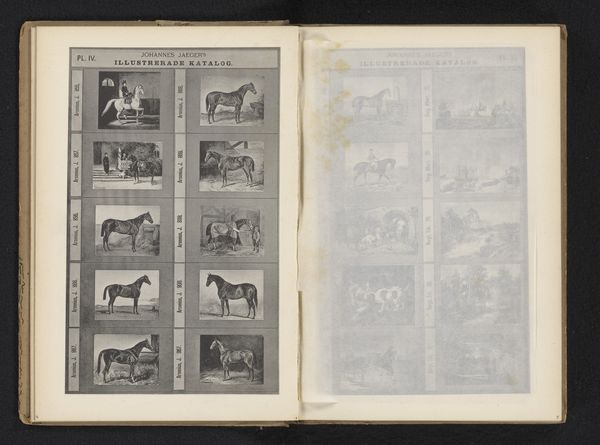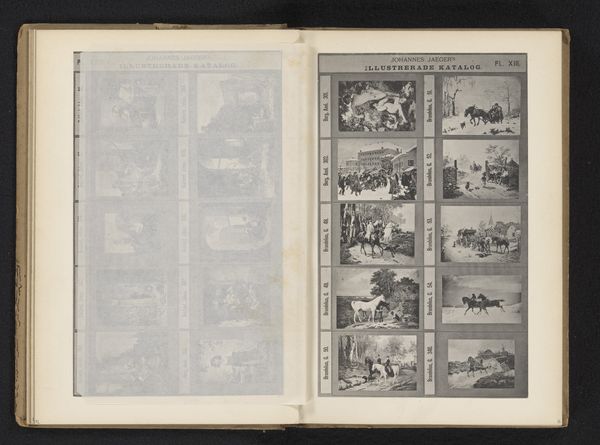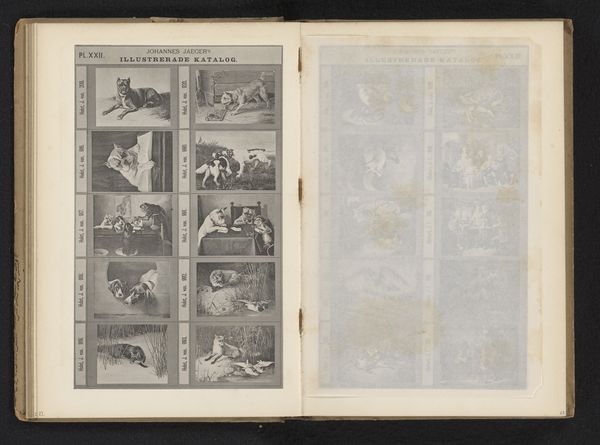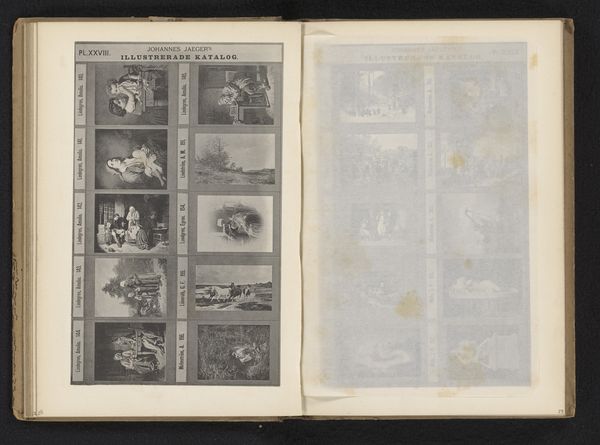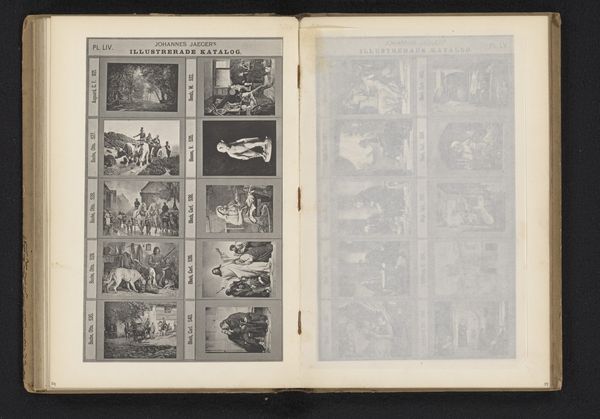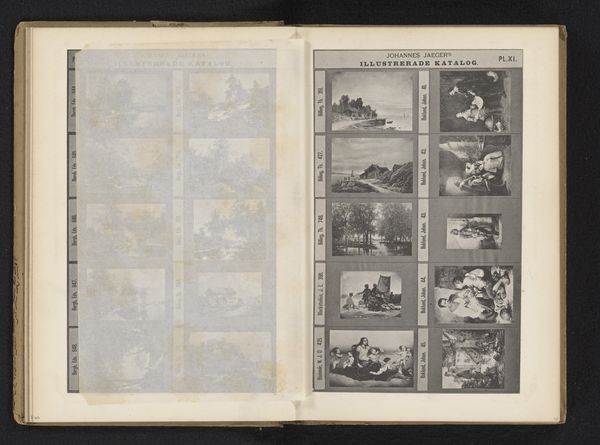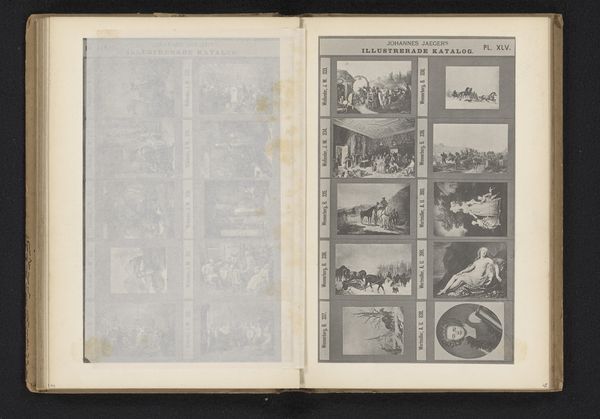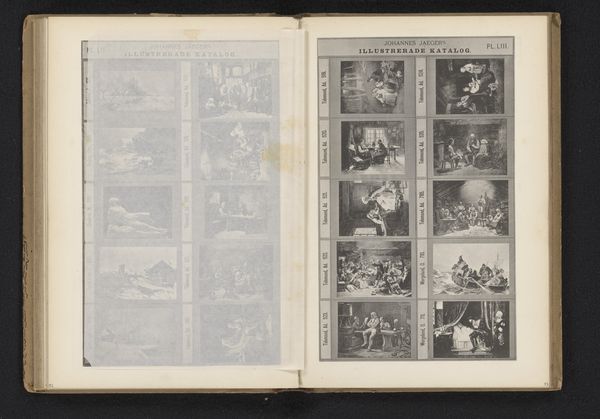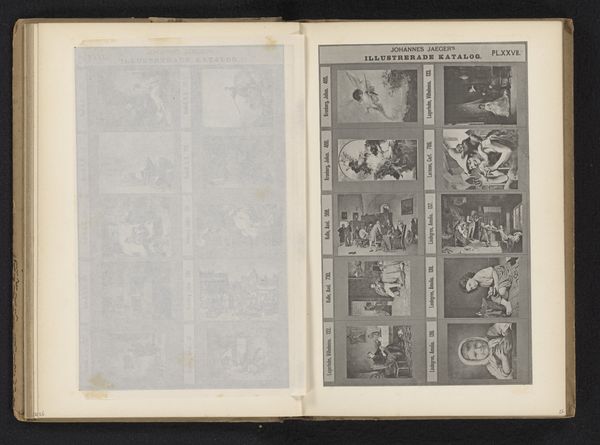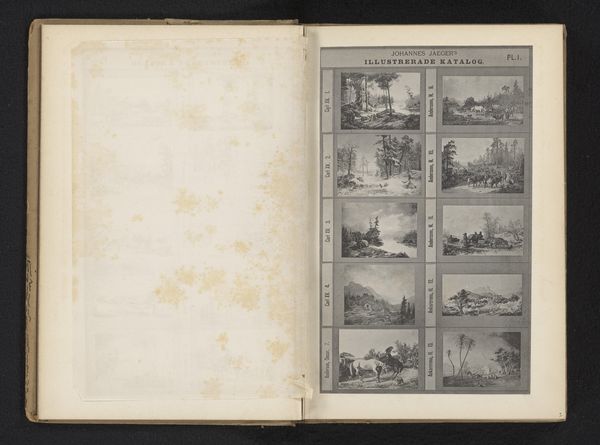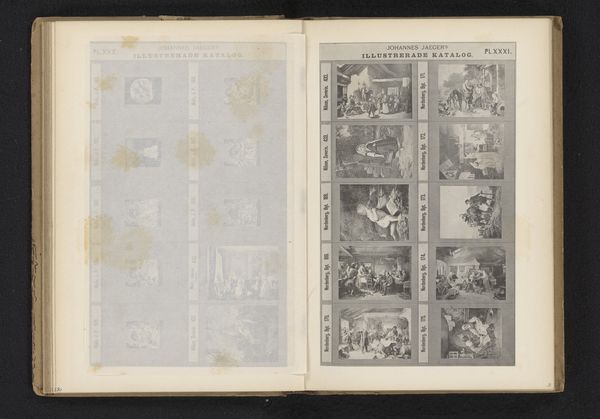
#
aged paper
#
toned paper
#
homemade paper
#
paper non-digital material
#
ink paper printed
#
sketch book
#
personal sketchbook
#
horse
#
pen and pencil
#
sketchbook drawing
#
sketchbook art
Dimensions: height 181 mm, width 109 mm
Copyright: Rijks Museum: Open Domain
Editor: This is “Fotoreproductie van tien schilderijen van paarden,” a photo reproduction of ten paintings of horses, by Johannes Jaeger, dating from around 1872 to 1882. It's a collection of images in what looks like a sketchbook. It’s got a slightly scientific feel, like an early attempt at cataloging horse breeds, maybe? What jumps out at you when you look at it? Curator: What immediately strikes me is the role of representation itself, here. Think about what it meant to reproduce images in the late 19th century. Photography was emerging, transforming how we documented the world. Jaeger’s "Fotoreproductie" isn't just about horses, it's about power. Who had access to this kind of visual information? Who was being excluded, and what does that tell us about class and societal structures at the time? What impact did this democratization of images have on the way we perceived our relationship with the natural world? Editor: So, it's not just a pretty picture of horses, but a snapshot of a society grappling with new technology and questions of access? Curator: Precisely! And it provokes consideration around the context of animal labour in this era. Horse breeding was very significant for industrial development, and these sketches provide evidence. It’s like looking at a visual archive of labour, mediated through an emerging photographic lens. Editor: That's fascinating. I hadn’t considered how the technology of reproduction itself could be so meaningful. Curator: Art provides great insights when understood in its complex social and historical context. This work invites us to consider intersectional themes—technology, class, labor, and how they shape our understanding of the world. Editor: Definitely something to keep in mind! Thanks!
Comments
No comments
Be the first to comment and join the conversation on the ultimate creative platform.
